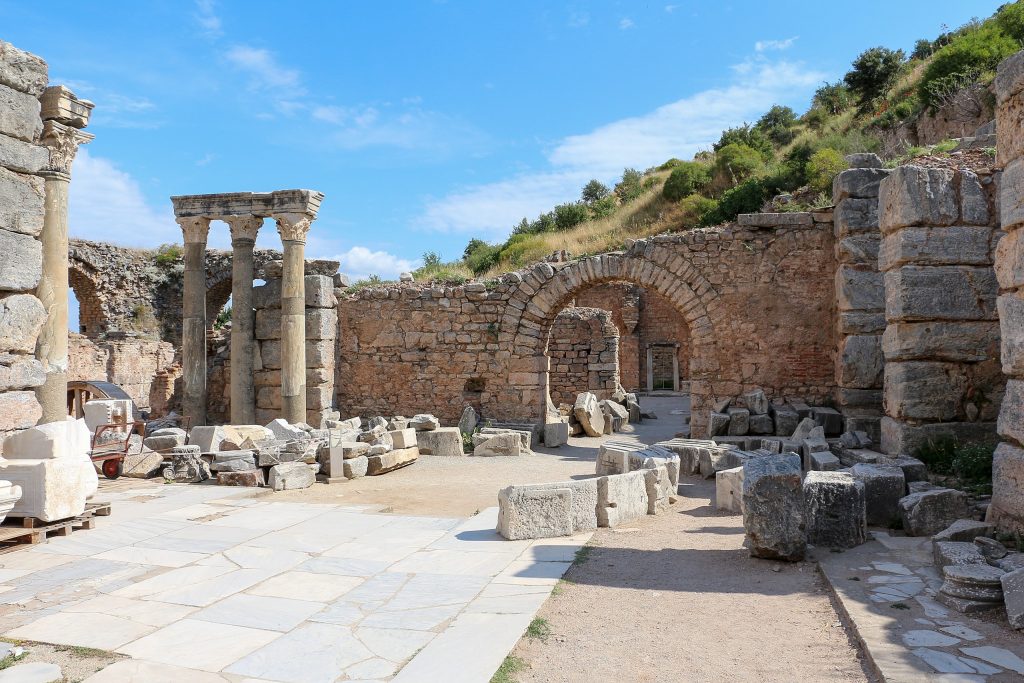
The actual excavation of the ancient city of Ephesus began in the latter half of the 19th century, as the British railway engineer John Turtle Wood carried out a number of archeological digs in 1863 in his search for the famed Artemision, or Temple of Artemis. Under the auspices of the British Museum, Wood pursued his goal of locating the legendary temple, one of the Seven Wonders of the Ancient World. Finally, on New Year’s Day in 1869, Wood accomplished his objective, though the joy of his discovery was short lived. The poor conditions of the various ancient structures in Ephesus and its surroundings, coupled with the lack of any significant discoveries, caused the project’s sponsors to withhold further funding. Consequently, Wood was forced to abandon his activities a few years later.
Nothing else of consequence occurred at this site until Otto Benndorf, who occupied the Chair of Classical Archeology at the University of Vienna, made a proposal in 1893 to an authorized agency for an excavation project at Ephesus. The approval of this venture led to the beginning of the largest archeological undertaking in what is today the modern Republic of Turkey. Step by step, the archeological field research team moved into the various areas of the ancient city. In the town of Selçuk itself, a house was built which still serves to this day as the home base for the excavations in and around Ephesus. In 1898, the Austrian Institute of Archeology was founded with the vision of carrying out the archaeological work at Ephesus.
After 1956, the annual excavation campaigns increased in intensively, both with manpower and machinery. In the following years, entire urban areas were unearthed. Consequently, over the years the excavation of Ephesus has developed into a massive enterprise. In the 1980s the focus of attention was on large-scale excavation work, in particular at the Artemision and the Terrace House 2 complex. Concentration shifted in the decade of the 90s to more detailed analyses and related publication activities. In recent years only highly focused, mostly small-scale excavations have been carried out and fieldwork has consisted of using the most modern archeological methods, especially those which cause no damage to the original structures, such as surveys and geophysical prospection.
Every season a team of numerous scientists from all over the world, primarily from Austria, Turkey and Germany, works at Ephesus. As only a small part of the city’s area (about 10-15%) has been explored, scientific research will be continued within the next years.
